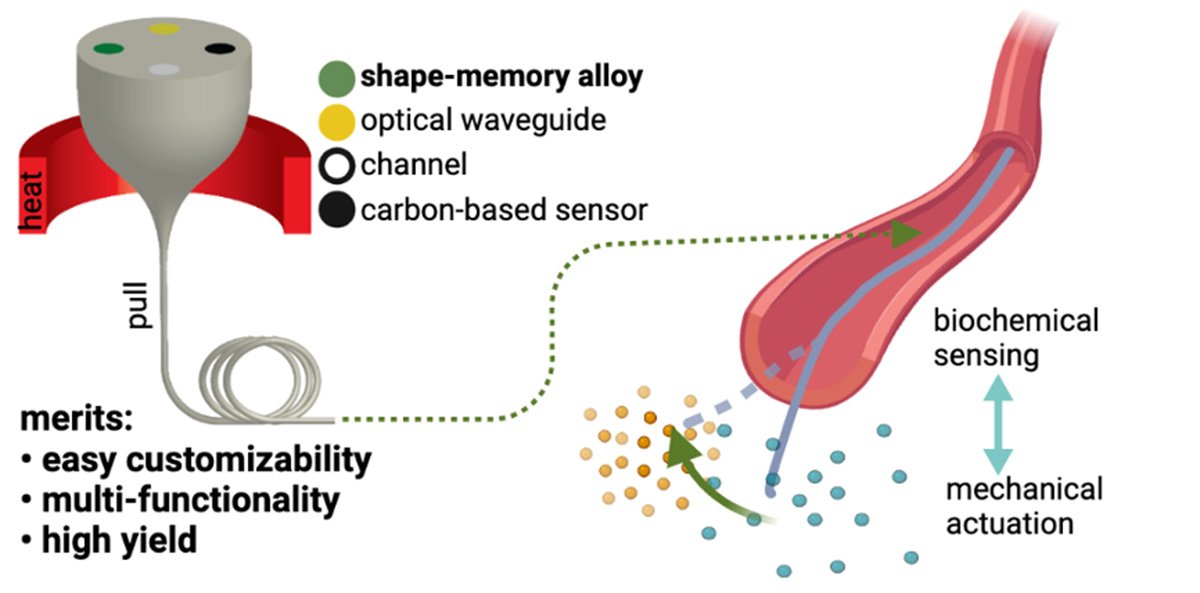Integrative actuators and sensors within a single active device offer compelling capabilities for developing robotics, prosthetic limbs, and minimally invasive surgical tools. But instrumenting these devices at the microscale is constrained by current manufacturing technologies.
Now, a team of researchers has developed a flexible polymer-based actuatable fiber which is capable of being integrated with smart materials and biosensing composite materials. The technology may lead to technological advancements in soft and flexible robotic fields, which could open possibilities for achieving closed-loop control for high-precision operations.
Details of their research were published in ACS Applied Engineering Materials on January 23, 2023.
Dr. Yuanyuan Guo, who is an associate professor at Tohoku University's Frontier Research Institute for Interdisciplinary Sciences (FRIS), led the team. "Our microscale fiber, integrated with actuating and sensing functions, could enable the use of smart catheters," says Guo.
The team produced the fiber by applying the preform-to-fiber thermal drawing process. The telecommunication industry has employed thermal drawing to produce optical fibers and, more recently, to fabricate multi-material and multifunctional fibers for biomedical applications. Although many important functions, such as electrodes, optics, and channels, can be incorporated within fibers, they are limited to passive modalities.

To deliver a workaround to this limitation, the team embedded shape-memory alloy (SMA) wires. The shape-memory effect of the SMA's enabled fibers with high mechanical actuation.
Additionally, they integrated the fiber with carbon-based composite materials to enable biochemical sensing. The sensors were capable of intrinsically high sensitivity towards electroactive molecules.
Utilizing a bifurcated vessel model, the team also succeeded in using the actuatable fiber sensor to approach branched vessels and capture localized chemical information for diagnostic purposes.
Looking ahead, Guo and her team hope to improve the fiber's freedom of movement.
- Publication Details:
Title: Shape-memory-alloys enabled actuatable fiber sensors via the preform-to-fiber fabrication
Authors: Yuichi Sato, Yuanyuan Guo
Journal: ACS Applied Engineering Materials






